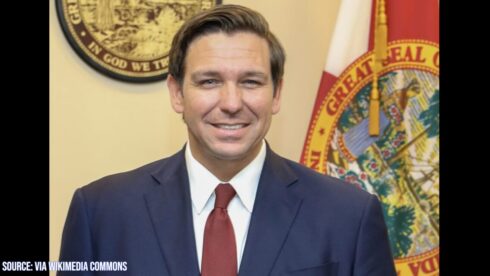Florida Governor Ron DeSantis has ordered that flags remain at full staff during the state’s Inauguration Day celebrations. Typically, flags are lowered to half-staff to honor the passing of significant figures or during moments of national reflection, but Governor Ron DeSantis has opted for a different approach. His directive reflects a notable deviation from tradition and is stirring conversations on its symbolism.
The decision to keep flags at full staff signals a commitment to celebrating the inauguration as a moment of renewal, progress, and optimism for the state of Florida. While many governors in the past have used Inauguration Day as a time to lower flags to honor public service or other noteworthy events, Governor Ron DeSantis’ decision demonstrates his desire to elevate the day’s significance through a symbol of unity and strength.
The Significance of Full Staff Flags During Key Events
In Florida, flags are typically lowered to half-staff for somber occasions, such as mourning the loss of public figures or to honor tragic events. By maintaining flags at full staff on Inauguration Day, DeSantis is making a bold statement about the triumph of democratic processes and the vitality of the state’s leadership. Full staff flags often symbolize hope, resilience, and a forward-looking vision.
This decision underscores the importance of looking toward the future and recognizing the progress made by the state, especially after a challenging period marked by natural disasters and public health concerns. Governor Ron DeSantis, who has emphasized economic growth, environmental protection, and educational reform, seems keen on framing the new administration’s beginning as a moment to celebrate the collective strength and potential of Florida’s citizens.
Public Reactions to the Governor’s Flag Decision
The public reaction to the governor’s directive has been mixed. Some Floridians view the decision as an uplifting gesture, symbolizing the state’s recovery and resilience following a tumultuous few years. Supporters of Governor Ron DeSantis have lauded his decision, praising his leadership and vision for a prosperous future. They see the full-staff flag as an emblem of vitality, signaling that Florida is moving forward in a positive direction under his leadership.
However, others have expressed concern about the decision, arguing that it may seem disrespectful in the face of serious issues still facing the state, such as ongoing natural disaster recovery efforts and the challenges posed by public health crises. Critics of the move suggest that a more subdued, respectful approach might have been more fitting, reflecting the ongoing needs and challenges faced by many communities within the state.
The Role of Inauguration Day in State Politics
Inauguration Day is a significant event for any state, as it marks the commencement of a new administration. It is a time for leaders to set the tone for their tenure, outlining priorities and laying out their vision for the future. Florida’s Inauguration Day is no different, but DeSantis’ decision to maintain flags at full staff serves as a message of unwavering confidence and forward momentum.
This move also highlights the governor’s commitment to maintaining a strong public image, particularly as he seeks to solidify his political legacy both in Florida and on the national stage. By ensuring that flags are flown at full staff, Governor Ron DeSantis is reinforcing his stance that his leadership is focused on progress, positivity, and revitalizing Florida’s economy, education system, and overall public welfare.
Comparisons with Other States’ Inauguration Day Protocols
Governor Ron DeSantis’ decision to keep flags at full staff stands in contrast to how other states handle their Inauguration Day flag protocols. In many other states, flags are lowered to half-staff on Inauguration Day to commemorate past leaders or significant figures in state history. This practice is seen as a respectful way to acknowledge the sacrifices made by those who have contributed to the state’s growth and prosperity.
However, Governor Ron DeSantis’ decision can be seen as a move that breaks from these traditional norms. By opting not to lower the flags, he may be signaling a departure from the typical political gestures of reverence, instead focusing on the optimistic outlook that a new administration brings. This divergence from other states’ practices makes his directive a subject of interest for political analysts and observers of state governance.
Governor Ron DeSantis’ Leadership Vision and Symbolism Behind the Flag Order
The decision to keep flags at full staff could also be interpreted as a deeper reflection of Ron DeSantis’ leadership style and political agenda. By maintaining the flags at full staff, he is signaling that his administration views challenges as opportunities for growth and development. It is a strong, symbolic gesture of confidence and resilience that underscores the governor’s approach to leadership: a focus on overcoming adversity and pushing for long-term, positive change.
Moreover, this decision may also serve as a rallying point for Governor Ron DeSantis’ supporters, galvanizing them for the work ahead. It reinforces the governor’s political messaging, emphasizing themes of hope, unity, and progress. As Governor Ron DeSantis prepares to continue his tenure, this symbolic act may serve as a cornerstone for his broader vision for the state, setting the stage for a new chapter in Florida’s political and social landscape.














